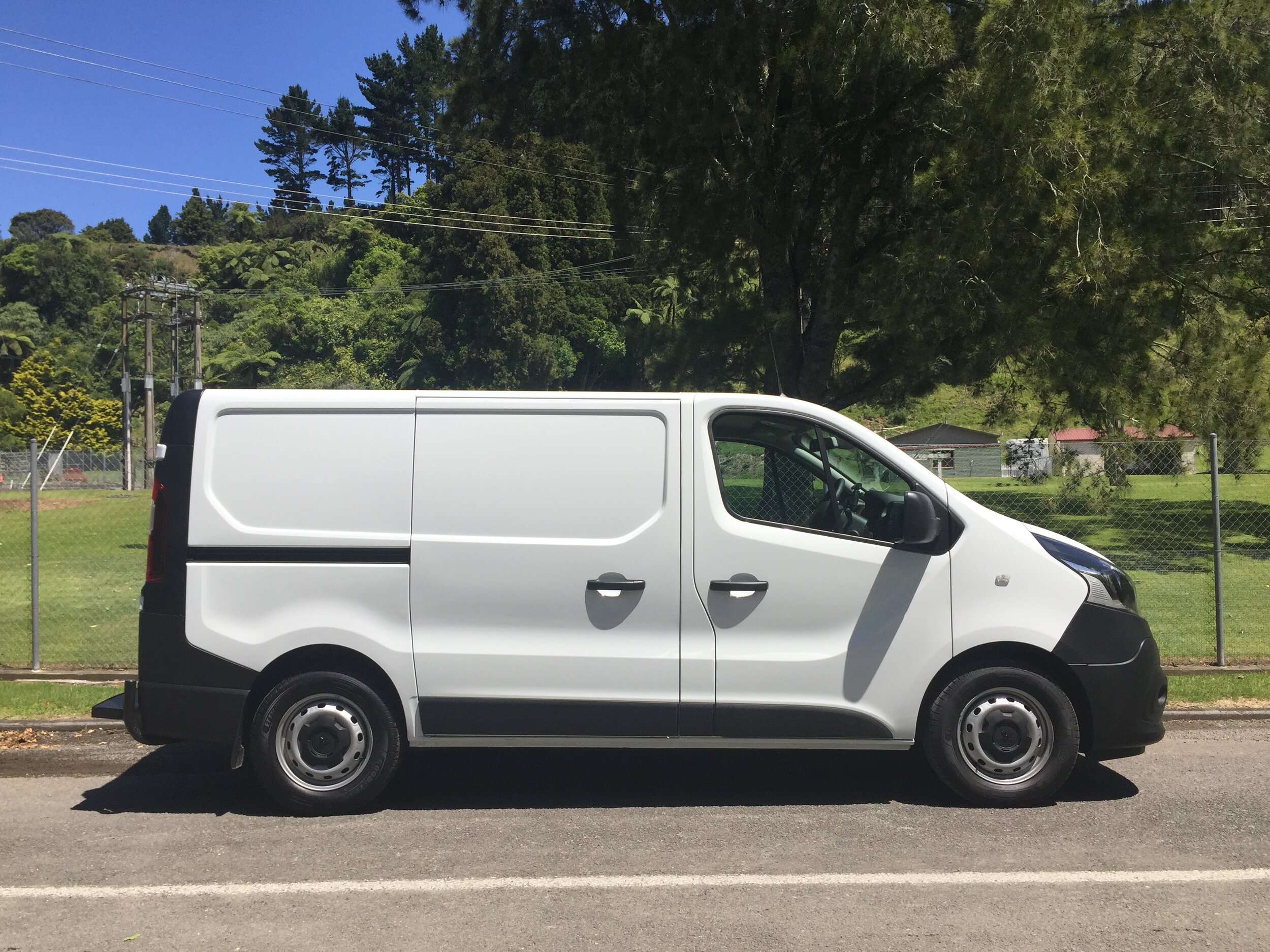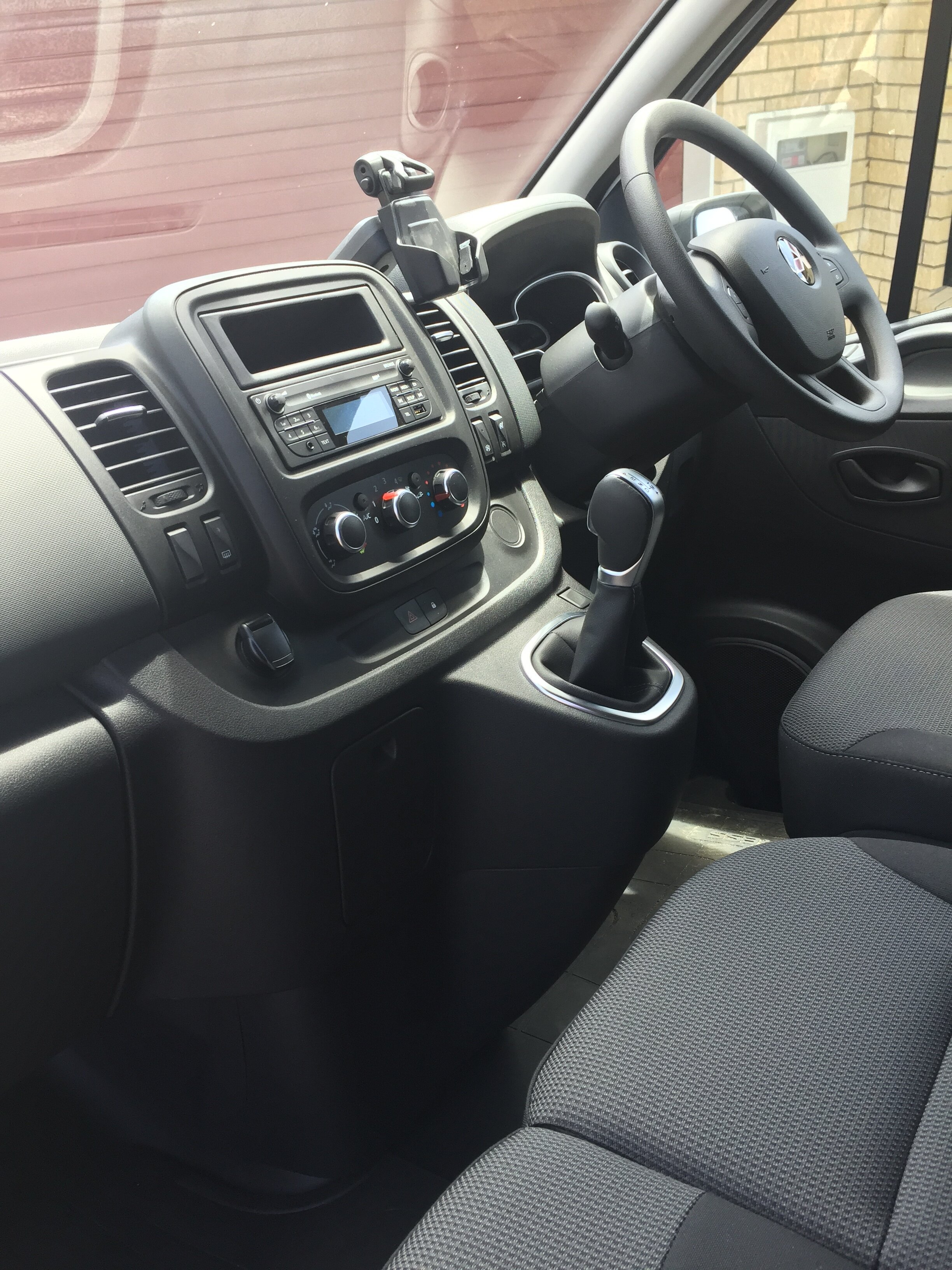Express carries value, cops ANCAP hit
/After five years absence from the van sector, Mitsubishi finally has something to sell. Does the new Express tick all the commercial vehicle boxes?
Mitsubishi Express 2.0DT
Price: $44,990 (introductory pricing, regular RRP $52,990)
Powertrain and performance: 2.0-litre four cylinder dCi intercooled turbo diesel engine, 125 kW at 3500rpm, 380 Nm at 1500 rpm. Six-speed dual-clutch automatic transmission. Fuel consumption 7.3 L/100km, emissions 191 g/km CO2.
Vital statistics: Length 4999mm, width 1956mm (excluding door mirrors), height 1971mm, wheelbase 3098mm. Cargo space 5.2 cubic metres. Pseudo MacPherson strut front suspension, beam axle and coil springs at the rear. 16-inch steel wheels with 215/65 R16C tyres.
We like: Comfortable and easy drive. Brilliant access to the cargo area. Plenty of minor storage up front. Appealing special retail price.
We don’t like: ANCAP assessment’s ‘Not Recommended’ judgement.
DID anyone hear an unusual noise coming out of Porirua a few weeks ago? That was the sound of the people at Mitsubishi Motors New Zealand Ltd breathing a collective sigh of relief when, after five years, they finally had a commercial van to sell again.
During that time it must have been a tough few years for MMNZ as it watched other distributors sell their vans in the thousands.
That’s what MMNZ used to do with its famous L300. A total of close to 40,000 of them were sold here between 1980 and 2015, with the L300 being top-selling van in several of those years. But then calamity - the decision had to be made to pull the plug on the vehicle because it no longer met modern-day safety standards.
The tragedy of that decision was that it had to be taken in the knowledge that no replacement van was available. And that forced the company to sit on its hands for five years and watch as established van manufacturers including Toyota and Ford, then newcomers such as Hyundai and more latterly LDV, combined forces to sell more than 6000 vans a year.
But then, good news. Mitsubishi became part of the Renault-Nissan Alliance, and that quickly resulted in a decision to build a Mitsubishi version of the Renault Trafic van exclusively for the commercial vehicle markets in Australia and New Zealand.
But what to call it? The van we Kiwis knew as the L300 had been marketed as the Express in Australia – and presumably because the Aussie market is much bigger than ours, it was decided that the replacement van would be Express.
Trafic is well-known all over the world, including in New Zealand. The first such van was produced in France way back in 1980, and the current model has been on the European market since 2014 where it is also sold as the Nissan NV300. A Vauxhall Vivaro version also used to be built at Luton, but that has now been replaced by the Citroen Jumpy van following PSA Group’s takeover of Opel/Vauxhall.
And now the Mitsubishi version has arrived here. It is available as a 1.6-litre twin turbocharged diesel with a six-speed manual transmission, and as a 2.0-litre single-turbo diesel with a six-speed dual clutch automatic.
Both models are front-wheel driven with what is known as Extended Grip, which is a traction control mode activated by the driver to assist in low-grip conditions. Both versions are also identical in size and offer all-important cargo volume of 5.2 cubic metres.
From the practicality point of view, Express immediately impresses as a useful van, even though it is not quite as large as the volume-selling Toyota Hiace and Ford Transit. And crucially, due to the fact it is developed off a Renault van that is at least six years old, it lacks several modern-day convenience and active safety features. More about that later.
Load space design is very good. The load area is easily accessible through dual sliding side doors and full-width rear ‘barn’ doors that feature stops at 85 degrees and 160 degrees. To open the doors to their widest you simply lift a couple of catches and they will swing open enough to allow forklift access to the cargo space.
This space measures 1268mm between the wheel housings which means it can accommodate standard-width pallets and such things as GIB sheets. Not only that, but the cargo area has 16 inbuilt cargo rings, including three on each side of the floor and five on each side wall.
In addition, there’s a large storage compartment that is accessed from the rear load area and extends under the passenger seats up to the dash, which helps allow really long items to be carried in the Mitsubishi by extending the loading length by 413mm to 1213mm.
Both versions of the Express run on a 3098mm wheelbase, with the manual model offering a maximum payload of 1150kg and the ability to tow up to 2000 kg braked, while the auto’s payload is 1116kg and braked towing capacity 1715kg.
The Express’ passenger compartment is separated from the cargo area by a bulkhead, and that means the driver environment is rather pleasant. It has three cloth-trimmed seats – a drivers seat and a passenger bench – the gearshift is up in the dash area, and a feature that underlines the van’s commercial intent is 89 litres of total storage capacity, including almost 25 litres built into the dashboard.
The middle seat has a fold-down workstation complete with pull-out clipboard, a clipboard holder, a non-slip laptop tray, and storage a laptop.
The Express also comes standard with a smartphone holder, which under normal circumstances would be a great idea, but unfortunately these days it is next to useless because it can only accommodate smaller phones from iPhone 6 size down. And although the van also has rear reversing sensors, also a bit useless is a reversing camera display which is located in the rear-view mirror.
I first encountered such a location aboard earlier model Hyundais and didn’t like it then – and I don’t like it now, because to look at the rear view requires the driver to take his or her eyes too far away from the frontal view. It’s much more user-friendly to have such a display as part of an infotainment screen mounted on the dash, but there isn’t such a thing aboard this van.
Nor is there Apple Carplay or Android Auto – the audio is a bit old-school featuring Bluetooth with voice activation and DAB.
From an operational point of view however, there are some more encouraging features. The Express has what are called aspherical wing mirrors which divide the mirror images into three sections for increased viewing, a wide-angle view mirror integrated into the passenger sun visor to help remove the left-hand blind spot, and it also has cornering front fog lights which turn on at night to light the inside of a bend.
The model we had for road test was the automatic, which is powered by a 2.0-litre intercooled turbo diesel that offers 125kW of power and 380 Nm of torque, and which is mated to a Getrag six-speed wet dual-clutch transmission with a flick shift manual sports mode.
It performs well, with an ECO mode and engine stop-start function helping reduce fuel consumption to a published 7.3 L/100km. The driver position is very good, the steering wheel is adjustable for both reach and rake, and the location of the gear lever is great. And of course visibility is great, with those big mirrors very useful.
Unlike several other competing vans, the Express is front-driven, and an interesting feature is what is called Extended Grip which is designed to enhance traction when pulling away or at low speeds on soft ground or low-grip surfaces.
When activated by the push of a button, the Extended Grip de-activates the van’s electronic stability control (ESC) to maintain torque split to each wheel. It is quite easy to get wheelspin with a van, particularly when it is unladen, and this system prevents that.
Another feature is a driving style indicator on the dashboard, which changes colour from green to yellow to red depending on how heavy-footed the driver is. Gee – wonder what colour the indicator would normally be with most courier drivers…
One modern-day issue with the Express – and this illustrates what can happen with badge engineering – is that although it is a brand-new entry on New Zealand’s commercial van market, it is in fact a vehicle that has been around for so long it doesn’t have any of the advanced collision avoidance systems that are aboard many of the other truly new vans.
This explains why, after the Australian New Car Assessment Programme (ANCAP) had recently assessed the collision avoidance capability of a total of 15 vans, it stamped the Express with a ‘Not Recommended’ due to its poor active safety specification.
The ANCAP people acknowledged that due to longer product cycles for commercial vehicles, many vans currently on the market – Express included - are either unrated or have ANCAP ratings that pre-date the introduction of latest collision avoidance technology.
But the organisation added: “Commercial vans generally operate with higher levels of exposure and hold a much longer economic life-span due to their primary commercial use and goods carrying function, and this makes their active safety capability arguably even more critical than that of passenger cars.”
In the case of the Express, ANCAP said that although it has an adjustable speed limiter and a driver’s seatbelt reminder, it lacks a number of other important active safety systems including autonomous emergency braking and lane support systems such as lane-keep assist.
Is that ANCAP criticism fair? Yes and no.
The Mitsubishi Express does carry a good level of passive and active safety specification that includes six airbags, ABS brakes with electronic stability control and electronic brake-force distribution, emergency brake assist, hill-start assist, trailer sway mitigation and the Extended Grip system.
But the fact the Express is a Mitsubishi version of a Renault Trafic that is way into its current model cycle means that it doesn’t carry the sort of very high-level active safety specification that is increasingly demanded by the safety assessors.
None of this means that the Mitsubishi Express is an unsafe van. Quite the opposite in fact. Our week with the vehicle showed it to be a secure and comfortable drive with excellent ride and handling characteristics. And let’s be frank here – it is streets ahead of the old forward-control L300 van it replaces, albeit after that hiatus of five years.
And here’s another appealing thing about the Express: it’s price.
While it carries recommended retail prices of $47,990 for the manual and $52,990 for the auto, MMNZ has lopped $8000 off and given them ‘special’ retail prices of $39,990 and $44,990.
That’s value, despite the fact it can’t emergency brake on its own or assist the driver to keep in the correct lane. And value for the money is vital for any commercial operator.






















